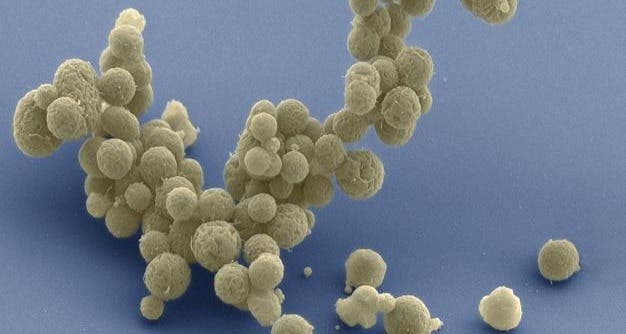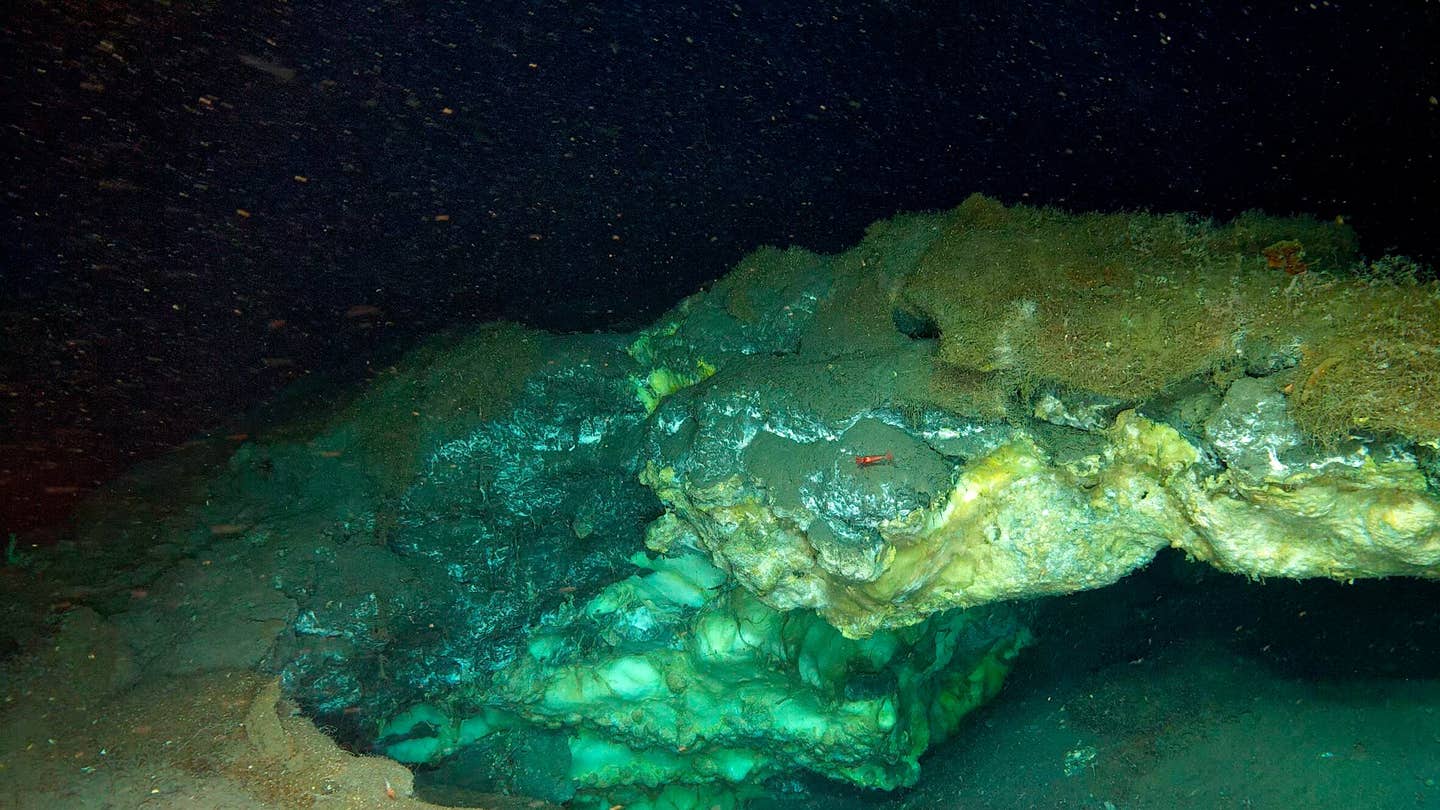Major artificial cell research offers compelling evidence that “life finds a way”
Groundbreaking research offers compelling evidence that even in the most minimal life forms the transformative power of evolution persists

[July 6, 2023: Staff Writer, The Brighter Side of News]
Electron micrograph of a cluster of minimal cells magnified 15,000 times. The synthetically streamlined bacterium, Mycoplasma mycoides, contains less than 500 genes. (CREDIT: Tom Deerinck and Mark Ellisman of the National Center for Imaging and Microscopy Research at the University of California at San Diego)
In the iconic 1993 science fiction film "Jurassic Park", a character named Ian Malcolm, played by Jeff Goldblum, issues a poignant declaration: “Listen, if there's one thing the history of evolution has taught us it's that life will not be contained. Life breaks free. It expands to new territories, and it crashes through barriers painfully, maybe even dangerously, but . . . life finds a way.”
Although the narrative context is the reemergence of prehistoric life forms through genetic engineering, the sentiment Malcolm expresses – the indomitable force of life's adaptability – captures the curiosity and fascination that fuels the work of real-life evolutionary biologists.
Within the hallowed halls of the College of Arts and Sciences Department of Biology at Indiana University Bloomington, you will find no menacing Velociraptors as in the world of Jurassic Park. Instead, you'll encounter Professor Jay T. Lennon and his team of scientists who are exploring evolution in the microscopic realm of synthetic biology.
Their groundbreaking research offers compelling evidence that even in the most minimal life forms – in cells synthesized in the lab and stripped of all but the essential genes – the relentless, transformative power of evolution persists.
Related Stories
“We can simplify it down to just the bare essentials, but that doesn’t stop evolution from going to work,” Lennon declares, a sentiment echoing Malcolm's cinematic pronouncement. Lennon's research is expanding our understanding of evolution and furthering knowledge about the robustness of life even when reduced to its most basic form.
The organism at the center of Lennon's study is not an ancient dinosaur, but a modern, synthetically constructed minimal cell. This bacterial organism, named Mycoplasma mycoides JCVI-syn3B, is a reduced form of a naturally occurring bacterium commonly found in the gastrointestinal tracts of goats and similar animals.
Over countless millennia, this parasitic bacterium has slowly shed many of its genes through natural evolution, finding ways to rely on its host for nutrients and simplifying its own genome in the process.
The minimalist version of M. mycoides was synthesized by scientists at the J. Craig Venter Institute in California in 2016. They stripped the natural M. mycoides genome of 45 percent of its original 901 genes, leaving just the 493 deemed essential for life.
Electron micrograph of a cluster of minimal cells magnified 15,000 times. The synthetically streamlined bacterium, Mycoplasma mycoides, contains less than 500 genes. (CREDIT: Tom Deerinck and Mark Ellisman of the National Center for Imaging and Microscopy Research at the University of California at San Diego)
The resultant minimal genome of M. mycoides JCVI-syn3B is the smallest known of any free-living organism, a significant reduction compared to the more than 20,000 genes contained within the genomes of many plant and animal species.
Under normal circumstances, an organism with such a streamlined genome might be considered evolutionarily constrained. It possesses no funct
ional redundancies and any mutation could disrupt crucial cellular functions, potentially causing lethality. With a reduced number of gene targets for positive selection to act upon, the opportunities for adaptation and evolution appear to be inherently limited.
However, Lennon and his team were intrigued by how a minimal cell like M. mycoides JCVI-syn3B would respond to evolutionary pressures over time. They sought to explore the potential for evolutionary adaptation in an organism that, at face value, seemed to lack the flexibility for such change due to its lack of genetic diversity and the potential deleterious impact of new mutations.
“Every single gene in its genome is essential,” Lennon explained. “One could hypothesize that there is no wiggle room for mutations, which could constrain its potential to evolve.”
The Lennon team's research, however, upended these initial hypotheses. They found that the minimal cell, M. mycoides JCVI-syn3B, has an exceptionally high mutation rate. Over a period equivalent to 2,000 bacterial generations (or approximately 40,000 years in human evolutionary terms), the bacterium was allowed to evolve freely under laboratory conditions.
The team then compared the fitness of these 'evolved' minimal cells with the original, non-minimal M. mycoides, and a strain of minimal cells that had not been allowed to evolve. To assess this, the researchers placed equal amounts of each bacterial strain in a shared environment, observing which strain proved superior in adaptation, ultimately becoming the dominant form.
As anticipated, the non-minimal version of the bacterium easily outcompeted the unevolved minimal version. However, the minimal bacterium that had been allowed to evolve for 300 days proved unexpectedly competitive, effectively regaining all of the fitness it had initially lost due to genome streamlining.
Upon further analysis, the researchers identified the genes that had changed most during the evolution process. Interestingly, some of these genes were involved in constructing the cell's surface, while the functions of several others remain unknown.
Roy Z. Moger-Reischer, a Ph.D. student in Lennon's lab, was the lead author on the paper detailing these fascinating findings, which was recently featured in the esteemed scientific journal Nature.
The implications of this research extend far beyond the petri dishes and microscopes of Lennon's lab. Understanding how organisms with simplified genomes overcome evolutionary challenges can offer new insights into a myriad of biological questions. These range from the treatment of clinical pathogens and the persistence of host-associated endosymbionts, to the refinement of engineered microorganisms, and even to the origins of life itself.
In the simplest autonomous organism, Lennon's research illuminates the power of natural selection to rapidly optimize fitness, shedding light on the evolution of cellular complexity. The enduring testament of this research, in the spirit of Jurassic Park's Ian Malcolm, is the reaffirmation that no matter the circumstances or challenges, life, indeed, finds a way.
Note: Materials provided above by The Brighter Side of News. Content may be edited for style and length.
Like these kind of feel good stories? Get the Brighter Side of News' newsletter.



